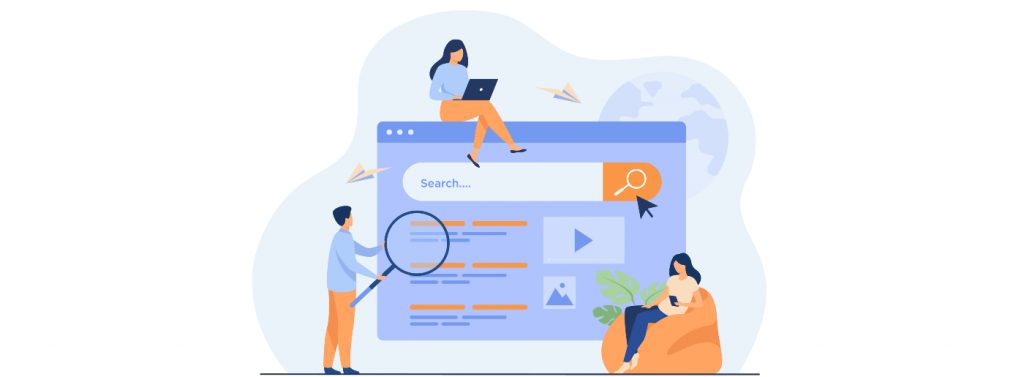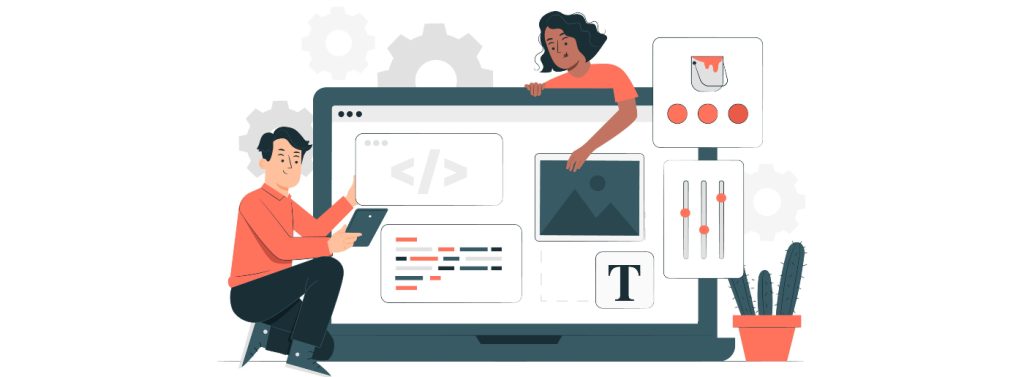SEO Professional Guide: Crawling Sites Explained
Indexing, crawling, and ranking are all important SEO aspects and equally significant for all kinds of businesses. To help understand each and every aspect of this article, we’ll focus on the crawling sites and review deep strategies of indexing and ranking in the search engine optimization process.
For example, Google and Bing scan your web content for indexing. It all depends on the ranking and linking to other pages as well. As it helps you find your website and list it in the search engine with all the supporting keywords. The process simply finds the best information available about your website.
The crawler appears as the text on your web pages, like product descriptions, blog posts, and shopping info, to store the exact information in its index. This results in a way; when someone is searching for you or your services, crawlers are constantly scanning for the imminent content and upgrades in its indexes system. These are some of the best automated processes to grab new customers, and the cool thing about it quickly is these are absolutely free.
Crawling Sites and Indexing Explained 
Crawling is the initial step that search engines like Google and Bing take to discover and index web content. Virtual exploration of the internet is based upon indexing. These search engine “crawlers” or “spiders” systematically visit websites, scan their pages, and collect information about the content they contain. All the information is stored in the search engine’s index. A vast database of web pages is present alongside related keywords.
The Role of Keywords:
Keywords are the linchpin of crawling and indexing. When users perform a search using specific keywords or phrases, search engines rely on their indexes to quickly provide relevant results. The actual usage of keywords is essential for ensuring search engine crawlers find and understand your pages during the initial stages. For your website’s content, It is best to Incorporate relevant keywords naturally into your product descriptions, blog posts, and other content as a fundamental SEO strategy.
The Ranking Factor:
Indexing and Crawling sites lay the groundwork, but the ultimate goal is to achieve a high-ranking in-search engine results page (SERPs). This ranking is obtained by various factors, including the relevance of your content to the user’s query, the quality, and authority of your website, in user experience and its metrics, such as page load speed as well as mobile-friendly spaces.
Linking and Ranking:
Linking plays a significant role in the ranking process. Search engine crawlers not only analyze the content of your pages but also examine the links between them. Inbound links (backlinks) from other reputable websites can boost your site’s authority and improve its ranking.
Continuous Crawling and Updates:
Search engine crawlers are not static; they continuously scan the web for new content and updates to existing pages. Regularly updating your website with fresh and, relevant and satisfying content can prompt search engine crawlers to reindex your site, revisit for potentially improved content as per indexing for ranking purposes.
The Benefits of Crawling Sites:
One of the most appealing aspects of crawling sites and indexing is that it is entirely automated and, more importantly, free. Having to invest in paid advertising and effective SEO practices can make your site more discoverable. When optimizing your website for search engines attracting new customers without increasing the visibility in search results, driving organic traffic is a more relevant process as compared to an ultimate or entire automated process.
Crawling Mechanics:
Web crawlers operate on a set of rules and algorithms that govern their behavior. Website owners can influence this process by using directives like robots.txt files to instruct crawlers on which parts of their site to crawl or not to crawl.
Crawlers also respect a website’s crawl budget, which is the maximum number of requests they can make to a site within a certain time frame.
Crawling Sites and SEO:
Understanding how web crawling works is essential for website owners and SEO practitioners. In structuring it means to navigate by users and by crawlers easily. Optimizing page load a number of times, ensuring that content is accessible without any barriers, for example, login walls or excessive JavaScript.
A roadmap of your website’s structure can be submitted to search engines to assist crawlers in discovering and indexing your pages more efficiently with the usage of XML scripts. Additionally, getting it all done and implementing enhanced and understandable content of your website by making it more rich in search results and queries.
The Crawl-Delay Factor:
Some websites may experience a high crawl rate from search engines, while others might prefer a slower pace to manage server resources effectively. The crawl-delay directive within robots.txt allows website owners to specify the time delay between successive crawler requests. A particular and useful shared environment as far as hosting is concerned, however, is smaller to websites or those on a non-stop communication between the clients and customer service. Assistance on their part ensures that crawlers spend more time on your high-value pages, which is why it increases the chances of those pages in timely indexing and being prominently ranked in all significant search engine results.
Crawling Sites and Mobile-First Indexing:
With the increasing use of mobile devices, search engines like Google have transitioned to mobile-first indexing. This means that Google predominantly uses the mobile version of a webpage for ranking and indexing. Website owners must ensure that their mobile sites are well-optimized, as this directly impacts search engine visibility. 
Responsive web design, fast mobile page loading times, and mobile-friendly content are essential for successful indexing and crawling sites in the first-hand mobile era of search engines.
These processes are ready to be implemented with an effective strategy. These crucial factors align all the business for a website to look thriving in the digital landscape. The profound impact of these concepts is the most recognizable factor in completing a successful crawling process that must cater to all your dire needs.
- Fundamental Pillars of SEO: Indexing, crawling sites, and ranking are the fundamental pillars of SEO. They are interconnected and work in tandem to determine your website’s visibility on search engine results pages (SERPs).
- The Significance of Keywords: Keywords are the bridge that connects your content to search engine crawlers. Your content helps crawlers understand your pages of what they are about. When incorporating these relevant keywords, it is more effective and likely to rank those keywords as predicted.
- The Pursuit of High Rankings: While indexing and crawling sites set the stage, achieving high rankings on SERPs is the ultimate goal. In order to determine the actual position of your website, relevant content, quality of a website, and user experiences play a top role in ranking and indexing.
- The Power of Links: Backlinks from reputable sources and outbound links to authoritative content enhance your website’s authority and credibility in the eyes of search engines.
- Dynamic and Continuous Process: SEO is not a one-time effort. Search engine crawlers continually scan the web for new content and updates.
- Cost-Effective and Automated: One of the most enticing aspects of indexing and crawling sites is that it’s entirely automated and, most importantly, cost-effective. With effective SEO practices, you can attract organic traffic without the need for expensive paid advertising campaigns.
- Crawling Frequency: Search engines prioritize crawling frequency based on your content’s perceived importance and freshness. High-quality, frequently updated pages tend to be crawled more often, so maintaining a consistent content schedule can benefit your SEO efforts.
- User Experience (UX): A positive user experience is crucial to SEO. Websites that are easy to navigate and provide value to users tend to rank higher. Prioritize UX improvements to keep visitors engaged and encourage longer page visits.
- Local SEO: Optimizing for local search is essential if your business operates locally. This includes creating and maintaining accurate business listings, acquiring customer reviews, and ensuring your website is geographically relevant to your target audience.
- Content Quality: High-quality, informative, and engaging content is key to attracting both users and search engine crawlers. Strive for content that answers user queries comprehensively and serves their needs effectively.
Analytics and Monitoring: Implement web analytics tools like Google Analytics and Google Search Console to monitor your website’s performance, track user behavior, and identify areas for improvement. Regularly review these metrics to make data-driven decisions for your SEO strategy.
Recommendations 
With these additional points in mind, let’s get into insights of this article:
- Regularly updating your website with fresh and relevant content encourages search engine crawlers to revisit and reindex your site, improving your SEO performance.
- Understanding and aligning your content with user intent is crucial. Creating content that directly addresses what users are searching for can boost your rankings.
- A well-organized site structure with straightforward navigation helps crawlers and users find content quickly. Use descriptive URLs and proper internal linking to enhance this.
- Given the shift to mobile-first indexing, ensuring a mobile-responsive design and fast loading times on mobile devices is essential for SEO success.
- Local businesses should focus on local SEO strategies, including optimizing Google My Business listings, for improved visibility in local search results.
- Faster-loading pages not only improve user experience but also increase search engine algorithms, potentially leading to higher rankings.
- Implementing schema markup can make your content more appealing in search results, leading to rich snippets and featured snippets that grab users’ attention.
- Optimizing images with descriptive alt text and proper file sizes can enhance the accessibility of your content and improve SEO.
- While controversial, some believe that social media engagement can indirectly influence SEO. Maintain an active social presence to boost your website’s authority potentially.
- Regularly analyze your competitors’ SEO strategies to identify opportunities and stay ahead in rankings.
Conclusion
Understanding crawling, indexing, and ranking is fundamental to successful SEO. When optimizing your website’s content, structure, and linking strategies, you can improve your chances of appearing prominently in search engine results. Harnessing the power of search engine crawlers is a cost-effective way to reach a wider audience and grow your online presence. As you embark on your SEO expedition, consider it an ongoing process. Continuously optimize your content, refine your strategies, and adapt to the dynamic nature of the web.
With dedication and a commitment to providing value to your audience, you can harness the power of crawling sites and search engines to propel your business to new heights, and the best part is that this powerful tool is freely available for all to use.
Crawling is not a static endeavor; it’s a dynamic and continuous process. Search engine crawlers persistently scan the web for new content and updates, ensuring that their indexes remain current. This dynamic nature necessitates the regular infusion of fresh and relevant content into your website, enticing crawlers to revisit and reevaluate your site, potentially catapulting you up the ranking ladder. At its core, crawling represents the virtual exploration undertaken by search engine “crawlers” or “spiders.” These tireless digital arachnids systematically traverse the web, scrutinizing websites, scanning pages, and hoarding information to be organized neatly in the search engine’s colossal index.
This index becomes the reference library that search engines consult when users initiate a query, forming the basis for ranking results.
The entire process depends upon ranking and linking before website crawling occurs. This development may seem a complex process, although it is done effectively in a simple manner.
“Remember, in the realm of SEO, it’s not just about being seen; it’s about being seen as the best. The crawling process is your ally in this quest for digital excellence.”
“In the world of SEO, embracing crawling is akin to opening the door to endless opportunities and the boundless expanse of the online universe.”
“Crawling sites isn’t just about the algorithms; it’s about your website’s narrative echoing through the corridors of search engine indexes.”






Leave a Reply